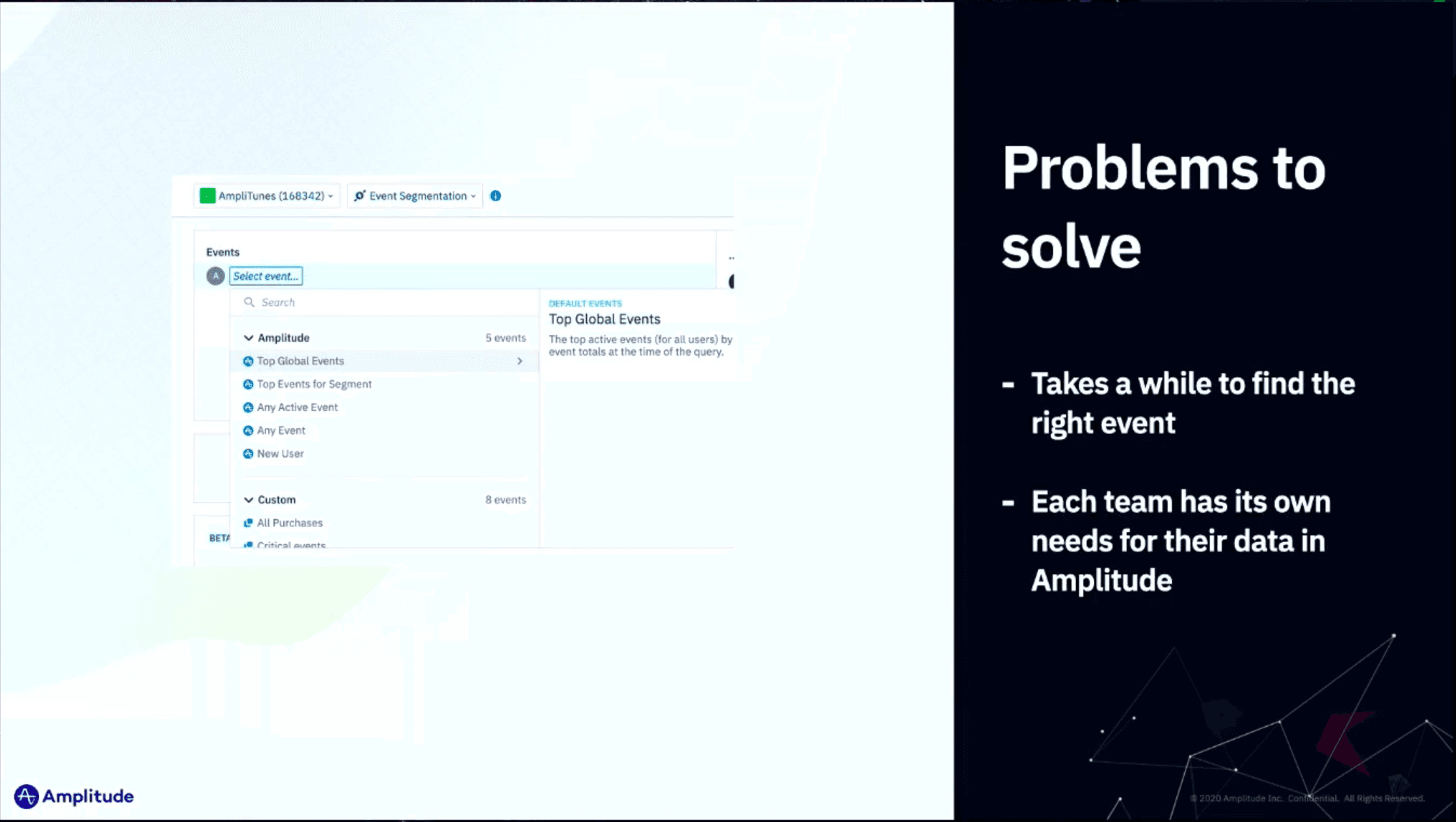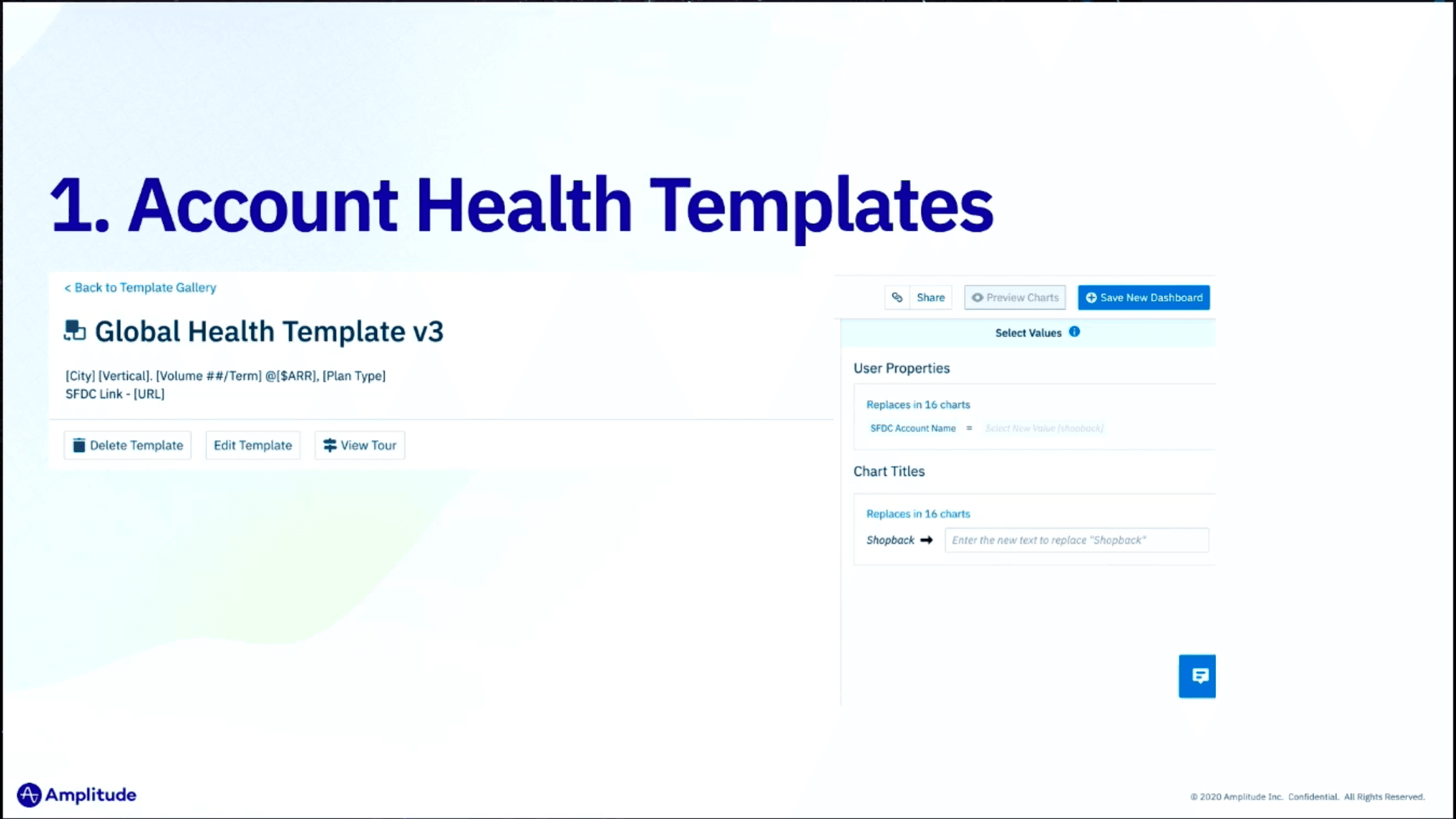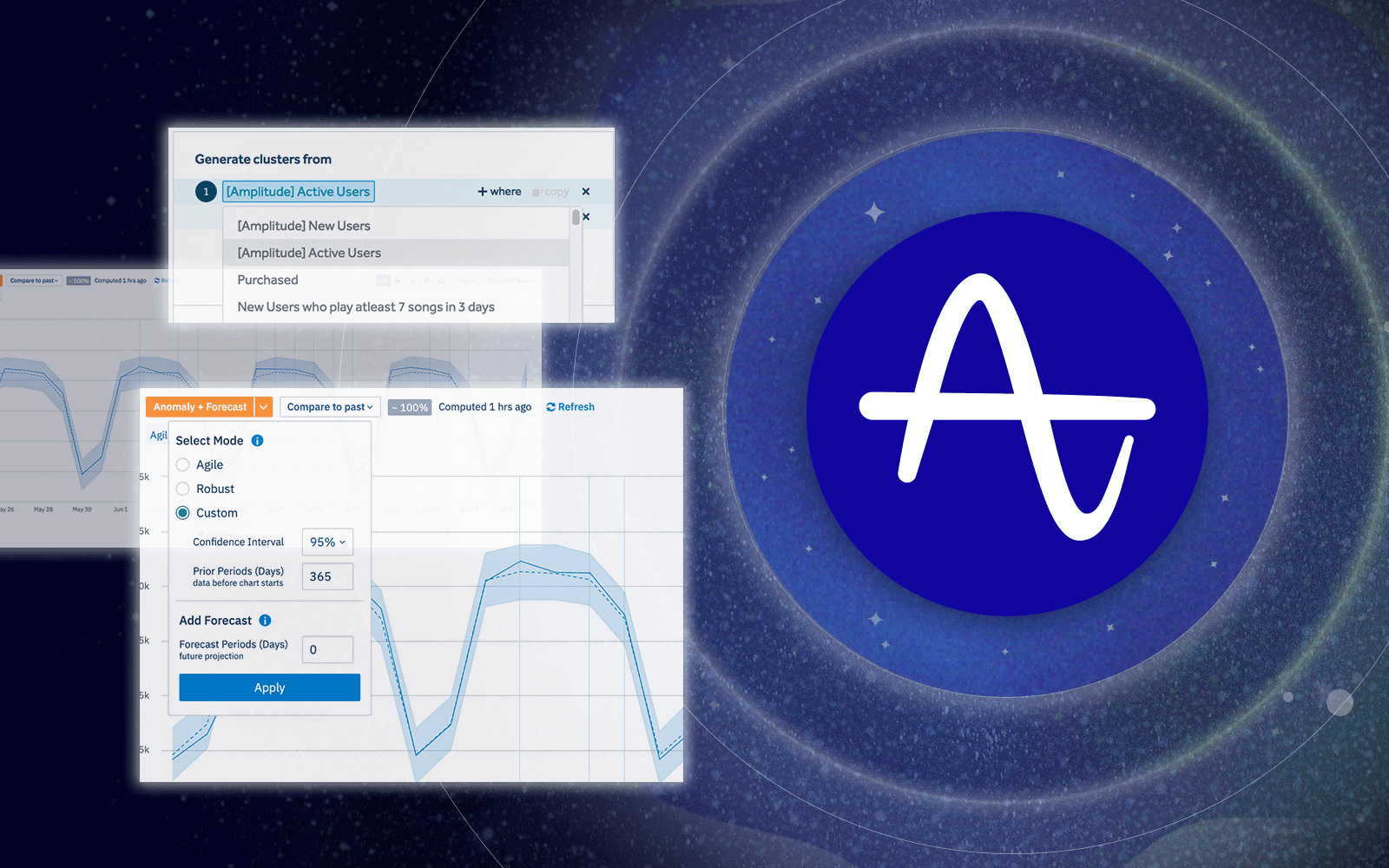How Amplitude Uses Amplitude to Drive Impact
Learn how our team discovered our North Star Metric, created new features, and drove customer success with Amplitude.
We’ve all had times when we’ve read an article or blog post and wondered if the company uses its own solution to drive its success. Well at Amplitude, we do. Our tool is fundamental to every stage of our product development process.
In other words, Amplitude helps us make Amplitude better for you.
The reason that our platform is so vital to our process is its versatility; you can use Amplitude to drive impact at all levels of your product operation. In this post, we hone in on three of the most important levels: finding your North Star Metric, product development, and customer success. Then, we’ll show you how our own product makes a difference to us here at Amplitude.
Here are some recaps of a few of our “Amplitude on Amplitude” videos from the 2020 Amplify conference — you can find the full serieshere.
How We Found Our North Star Metric with Amplitude
You can’t start measuring your product’s impact until you know what key performance metric (KPI) is most indicative of product success. At Amplitude, we’re big believers in aligning product teams to a standard North Star Metric. We even wrote aplaybook about it, and have used our own tool to help us understand what our North Star should be.
By using analytics in Amplitude, our team found our customers’ retention was related to how often they learned something from an Amplitude chart and shared that learning with their network.
Based on this insight, our team identified “Weekly Learning Users” (WLU) as our North Star Metric. A WLU is a user who broadcasts a piece of learning drawn from Amplitude that’s consumed by at least two other people across a week-long period. It represents our most valuableuser persona: the Advocate, a user who shares context to drive decisions and take action within an organization.

The more users learn, the more they embed into our network. The more they embed into our network, the higher our retention rates!
ThisNorth Star helps guide our entire company in everything, from customer success to product development and scaling. And we couldn’t have found it without using our own product.
How We Used Amplitude to Develop a Better Product
Internally, we leverage every part of our product during the product development cycle. Our product managers live in Amplitude daily in order to understand user behavior, quantify opportunity size, form hypotheses, and analyze the results of experiments and feature roll-outs.
For Improving Analytics Productivity
Our development of the “suggested events” feature is an excellent example of how we use our own product to drive impact here at Amplitude. For users to become Weekly Learning Users, they need to run useful queries in Amplitude. Part of this process involves selecting events (actions that can be performed in the product) to run a query. But our own product showed us that the list of events to choose from confused our users.

We found that our old system for returning queries presented some common problems.
Our initial takeaway was that Amplitude users needed to see a list of events customized to their needs. No one likes running a query and having a mountain of non-specific event options returned.
Following this hypothesis, we developed shorter working list returns from each query. We believed that this would increase productivity and reduce the noise in selecting event types, easing the creation of more WLUs. Though it was a risky hypothesis, we relied on Amplitude to measure the impact of this hypothesis and revise our offering to our customers.
It turned out to be a great success. Our tool showed us that users who chose from the new “suggested events” panel took less time to select an event. We also saw that a significant number of event selections came from the recommended shortlist. Using Amplitude, we’d improved our overall product offering and increased customer success.
For Setting Success Metrics
Another new feature we’ve launched, built based on data from our own product, is Anomaly and Forecast. This feature enables teams to reduce noise when monitoring KPIs and set more accurate forecasts.
From a manual perspective, it can be hard to grasp the meaning/cause of small data changes. Data changes daily, and aside from significant step changes, it’s not always clear if a given change is meaningful. Data analysts often have to intervene manually to identify real anomalies from routine or seasonal changes. We had a hunch that this didn’t drive optimum productivity.
Based on this observation, we invested in an embedded anomaly detection capability within Amplitude. It makes the detection of significant changes in data evident to all team members and avoids unneeded investigations.
We set two success criteria for this new beta and used Amplitude to measure them. The first was the percentage of users using the feature to query data, and the second was the number of users retained on week two of usage. Amplitude helped us set threshold limits, select these metrics, and understand how useful our new idea was to our customers.
How Amplitude Helps Us Drive Customer Success
Amplitude is also crucial to the work of our customer success team. Using a custom dashboard in Amplitude, our team can measure the rate at which customers adopt features and track our most influential success KPIs, including Weekly Learning Users and other adoption and health metrics.

Our customer success teams use a standardized dashboard template featuring a range of the most effective health and adoption metrics.
Combined with our Salesforce integration, it’s easy to keep a close eye on all the metrics that determine account health. Our customer success team also uses the metrics from our Account Health Templates in executive business reviews with our customers to showcase adoption and success rates.
Amplitude allows our success teams to plan training and educational content. The key to successful adoption is making sure customers know how to get the most out of our product. By observing Amplitude’s usage patterns, our success teams can see where additional training might help drive success.
More Amplitude on Amplitude
There’s no better way to mitigate the so-called “curse of knowledge” than by using your product. It forces you to take your customers’ place — to share in their experience of your product, good and bad. Thanks to this, we’ve been able to iterate with both speed and smarts at Amplitude, consistently producing new features our users love.
By incorporating our product into every aspect of our product cycle, we’ve been able to not only review and improve our processes, but benefit from them, too. In other words, our product helps to improve itself!
Find more Amplitude on Amplitude content — including how our engineering, user experience, and marketing teams use our product — in theAmplify portal.

Hayley Sakae
Former Social Media Manager, Amplitude
Hayley is a former Social Media Manager at Amplitude. She owned all organic channels and employee advocacy, driving social reach and engagement among both internal and external product and growth leaders.
More from Hayley




